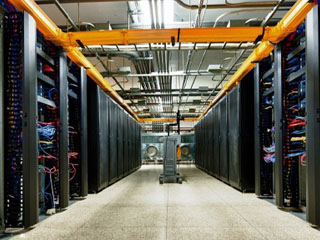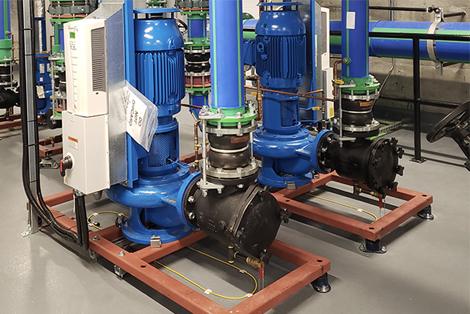Data center energy consumption worldwide is becoming a huge concern. In today’s world, as each day goes by, businesses, financial institutions, governments, education and our social lives are increasingly becoming vertically integrated to the digital world. However, this digital convenience comes at a cost – a rapidly increasing energy consumption that’s raising eyebrows and sparking concerns about the impact data centers are having on the environment.

The AI Hype Cycle and Its Impact on Energy Consumption
One of the main contributors to the surge in data center energy consumption is the rise of artificial intelligence (AI). From self-driving cars to personalized medicine, AI is transforming our lives in unprecedented ways.
Training and running these sophisticated AI models requires enormous computational power, which translates to a massive demand for electricity. Data centers housing the hardware necessary for AI research and development are witnessing a significant increase in their energy consumption.
Worldwide Data Center Energy Consumption
In 2022 the International Energy Agency (IEA) put the total worldwide energy usage at 26,587 Billion kWh, close to 27,000 Terrawatt hours (TWh). The IEA published a recent study that examines the expected growth of power consumption globally through to 2026. The data center industry is a significant driver of energy demand growth. In 2022 data centers consumed 460 TWh. This represents 2% of total global energy usage. By 2026 they predict the amount of energy demanded by Cryptocurrencies and AI will double. This together with other demands for data center services means the demand by the industry could reach 1,000 TWh by 2026. To put this into some perspective, this is approximately equivalent to the total consumption of Japan.
In the US, the energy demands of data centers is set to rise from 200 to 260TWh between 2022 and 2026. This is the equivalent of 6% of the total power usage for the whole country. In some places the numbers are even worse. Take for example Ireland, where by 2026 the total energy used by data centers could equate to 33% of the total energy usage for the country. This, compared to 17% in 2022.
The “Big Five” in the tech industry are Google, Amazon, Meta, Apple, and Microsoft (GAMAM companies). These 5 companies alone were responsible for an estimated energy consumption of over 90 terawatt-hours (TWh). This means that these 5 companies accounted for 19.5% of the total energy used by the data center industry.
The below infographic from Statista shows that in 2022 the global data center energy consumption was just below that of France. By 2026 it would have moved up to the 5th largest consumer of energy in the world, below Japan.
This staggering projection underscores the need for a closer look at the factors driving this trend, the potential consequences for the planet, and drive innovation towards reduced energy consumption of data centers while not compromising the essential services they provide.

The Financial Cost
In addition to the environmental impact, there is a financial implication too. How much money does it cost to simply cool all these data centers?
If we consider 415 TWh of total power in 2022, and an average PUE of 1.55 with the average cost per kWh in the USA for industrial power being $8 in May 2024 we can derive approximately the total amount spent on data center power.
415 TWh is 415,000,000,000 kWh.
415,000,000,000 kWh x $8 per kWh = $3,320,000,000,000 USD. That is $3.32 Trillion USD in annual power costs for data centers worldwide.
With a PUE of 1.55, it means for every $1 spent on IT loads $0.55 is spent on cooling. That means approximately 1/3 of total cost is going towards cooling, or around $1.1 Trillion USD. With the current trend this will increase to $2.2 Trillion USD by 2026, should PUE not make further improvements.
The drive towards lower environmental impact and data center sustainability therefore has a financial incentive as well. Reduction of energy consumption through innovative cooling solutions and good data center design practices, directly impact the operational costs, as well as benefiting the environment.

Data Center PUE trends (Uptime Institute)
The Efficiency Paradox
While the overall energy consumption of data centers is on the rise, it’s important to acknowledge the significant strides made in improving their energy efficiency. Advances in server technology, cooling systems, and data center design have led to a considerable reduction in energy use per unit of computation.
However, this efficiency gain is being offset by the exponential growth in data generation and processing. The demand for data storage and computation is outpacing the efficiency improvements, resulting in a net increase in energy consumption. This paradox further highlights the need for solutions to reduce the energy consumption in data centers. The average kW per rack is increasing, computer power consumption is increasing, and doesn’t show signs of slowing. Reductions can therefore come from advances in cooling system efficiency, and data center design practices that improve the methods with which the cooling energy is delivered to the IT equipment.

Breakdown of energy consumption in a data center
Mitigating the Impact: A Call for Sustainable Solutions
The growing energy footprint of data centers calls for urgent action to mitigate their environmental impact. Here are some key strategies that can help:
- Renewable Energy Transition: Shifting towards renewable energy sources like solar and wind power can significantly reduce the carbon footprint of data centers. Many tech giants are already investing in renewable energy projects to power their data centers. Several are investing in modular nuclear reactor technology.
- Energy-Efficient Hardware and Software: Continued research and development of energy-efficient servers, processors, and cooling systems is crucial. Optimizing software and algorithms to reduce computational workload can also contribute to energy savings.
- Data Center Location and Design: Strategically locating data centers in cooler climates and utilizing innovative cooling technologies can minimize energy consumption.
The rise of data centers presents a unique challenge in our quest for a sustainable future. While they are essential for our digital economy, their growing energy consumption cannot be ignored. By embracing innovative solutions and adopting a responsible approach, we can ensure that the digital revolution doesn’t come at the cost of our planet’s health.




